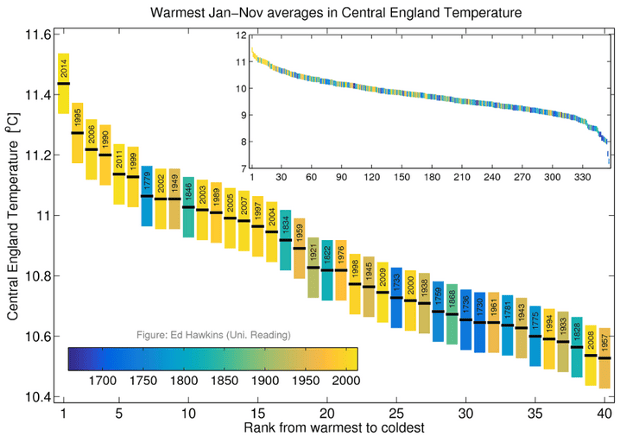Five die in Queensland floods after downpours in Caboolture
State
premier Annastacia Palaszczuk and Queensland police confirm deaths
after ‘off-the-scale’ downpours hit city north of Brisbane
1
May, 2015
A
fifth person has died as a result of an extreme downpour and flash
flooding in southeast Queensland.
The
49-year-old man was in a vehicle that was swept away on Beerburrum
Road at Caboolture, north of Brisbane, about 5.30pm on Friday.
Two
other people, a 21-year-old woman and 16-year-old boy, managed to
escape the vehicle.
An
eight-year-old boy and two adults were killed after their car was
swept away by flood waters also in Caboolture.
Police
were called to Dances Road just after 5.30pm. The boy was pronounced
dead at the scene along with a man in his 70s and a woman in her 30s.
Three
hours later, a 75-year-old man was swept to his death when his
vehicle was inundated by fast-moving waters at Burpengary.
Queensland
premier Annastacia Palaszczuk described the deaths as tragic, saying
police investigations were under way. “On behalf of all
Queenslanders we express our deepest sympathies,” she told
reporters on Friday night.
She described the storm cell as “off the scale”.
Caboolture
alone received 333mm of rain from 9am, with 277mm falling within
three hours in the afternoon. The average rainfall for Brisbane for
the month of May is 74mm but, as ABC weather presenter Jenny Woodward
tweeted, the city has received a record amount of 181mm, with the
previous mark having been 149mm in 1980. The Bureau of Meteorology
has also said that some areas of Queensland experienced winds in
excess of 100km/h.
At
one point, the road to Caboolture hospital was cut off and new
patients diverted to nearby hospitals.
The
state emergency service had responded to 1,400 incidents throughout
the day, and there were 19 swift-water rescues, Palaszczuk said.
The
wild weather, caused by a low-pressure system, moved south to
coincide with peak-hour traffic in the capital. Alistair Dawson, an
assistant police commissioner of the Queensland police service
offered advice to drivers. “Slow down, remember there are a lot of
people trying to get home to their loved ones, and not to drive
through flooded roads,” he said. “If it’s flooded, forget it.
It’s better to arrive late than not at all.”
Dozens
of people were rescued from flood waters, train services were
suspended, flights delayed and cars were seen floating down roads
that turned to rivers.
Dams
including Wivenhoe, Somerset and North Pine were forced to release
water and the NRL was forced to postpone the Anzac rugby league Test
at Suncorp Stadium to Sunday.
“This
has been an extreme weather event,” Palaszczuk said.
Conditions
are expected to ease by midnight after the storm passes further south
through the Gold Coast and hinterland, she added. But she urged
Queenslanders to remain vigilant, obey road closures and keep away
from creeks and waterways.
The
low is expected to hit northern New South Wales in the early hours of
Saturday morning with authorities preparing for the worst of the rain
and winds over the next six to 12 hours, according the Bureau of
Meteorology. 150 to 200mm of rain is expected in the region during
that time with the possibility of 350mm in some areas.
People
and vehicles wade through a flooded street during an intense
rainstorm in Havana, on April 29
Heavy
rains have resulted in the flooding of the Cuban capital Havana,
forcing 10,000 people to leave their homes
1
May, 2015
At
least three people have died after torrential rains on Wednesday
caused high flooding in parts of Havana, forcing 10,000 to seek
refuge.
According
to reports on Thursday from local authorities, the victims included a
pensioner who drowned in the Old Havana district, a 24-year-old man
who was electrocuted by falling cables, and a 43-year-ol lawyer.
Winds
at a speed of up to 98 miles per hour caused trees to fall and three
buildings to collapse, damaging 24 more.
The
floods also caused cuts to the power and water supply in parts of the
city, where three shelters have opened to offer refuge to the 10,000
made homeless.
Much
of the city's housing is old and in poor condition, and its buildings
are prone to collapse, a problem exacerbated by overcrowding, budget
constraints and the effects of a decades-long trade embargo
England
faces major rise in record hot years due to climate change –
scientists
Increased
effects of climate change enable scientists to predict localised
changes in weather, such as at least a 13-fold increase in record hot
years in England

1
May, 2015
Record-breaking
hot years in England have become at least 13 times more likely
because of manmade climate change, scientists have discovered.
The
new study suggests England faces a “significant and substantial
increase” of years similar to 2014, which was the hottest on record
worldwide and the warmest in England since records began more than
three and a half centuries ago.
Dr
Geert Jan van Oldenborgh from the Royal Netherlands Meteorological
Institute, who co-authored the study, said climate change had become
so influential on the world’s weather that its effects could be
modelled at increasingly local levels.
“Climate
change has become so strong over the last 10 to 15 years that you can
really sense it now on the local level. Fifteen years ago you could
only really see it if you looked at the global mean temperature. And
now any old thermometer can show you that the temperatures are
increasing,” he said.
The
international team used computer models to compare years of natural
variation with years with the current level of manmade warming. Lead
author Dr Andrew King, from the University of Melbourne, said larger
scale continental or global modelling tended to iron out regional
variabilities.
“As
a result of this low variability, it is easier to spot anomalies.
This is why larger regions tend to produce stronger attribution
statements, so it is remarkable that we get such a clear
anthropogenic influence on temperatures in a relatively small area
across central England,” he said.
Central
England has the world’s longest running temperature record, dating
back to 1659. Van Oldenborgh said the changes observed by weather
watchers over the last 356 years matched closely with the findings of
the models. He said the 13-fold increase was at the lowest end of
predictions and the increase was realistically higher.
The
first quarter of this year has already been warm globally, smashing
all previous records just months before governments meet in Paris at
the end of the year for major UN climate summit.

Van
Oldenborgh said record hot years were not useful for indicating the
effects of extreme weather under climate change - 2014 did not
contain a single record hot month in England despite its overall
record. But he said the study was a stepping stone towards being able
to isolate the contribution of greenhouse gases to single events,
such as the UK’s flooding two winters ago.
“It’s
good to show that the Earth is getting warmer. I don’t know if
anybody was really impacted by an annual mean high temperature. The
numbers here are so big that we think we can go from an annual mean
to even smaller scale events, like heat waves and floods,” he said.
Bob
Ward, policy and communications director at the Grantham Research
Institute on Climate Change at the London School of Economics, said
the study provided further evidence that UK’s the weather had begun
to respond to climate change in ways that were already affecting
people’s lives, from their homes to their health.
“As
the atmosphere warms, it can hold more water, leading to heavier
rainfall. Many people, particularly farmers and gardeners, are
already observing these impacts, for instance, through spring
arriving earlier, and a gradual shifts in the location of some plant
and animal species. But climate change is also increasing the risk of
flooding, both inland from rainfall and along our coasts due to sea
level rise, and the risk of heatwaves,” he said.
Recently
we found online an image of the city of Merida, capital of Yucatan
state in which it looks with insignificant vegetation cover, so some
people say that the loss of plant cover is leading the warming of the
city, which sounds logical. But others argue that nothing happens,
that is normal reach 107.7
degrees Fahrenheit
in April







Past the crook of the ol' hockey stick, into Ronald Dumsfeld's known unknowns, where Black Swans hang around; more ominously there will be no clue when we have ventured into the unknown unknowns, the roosting grounds for 'dem Black Swans...
ReplyDelete